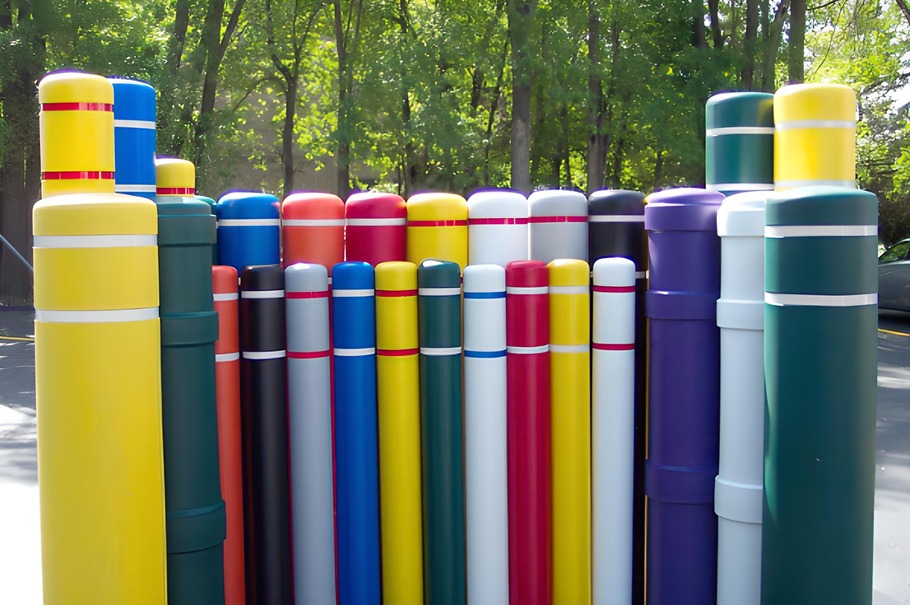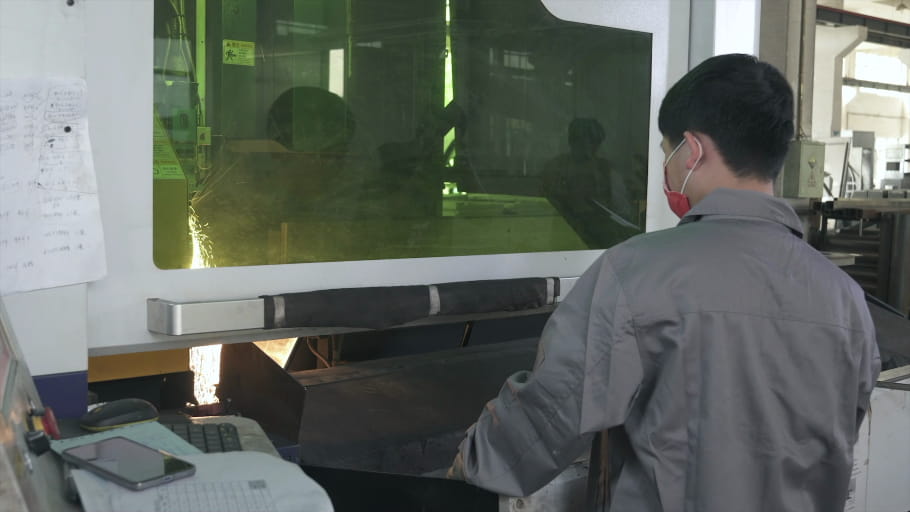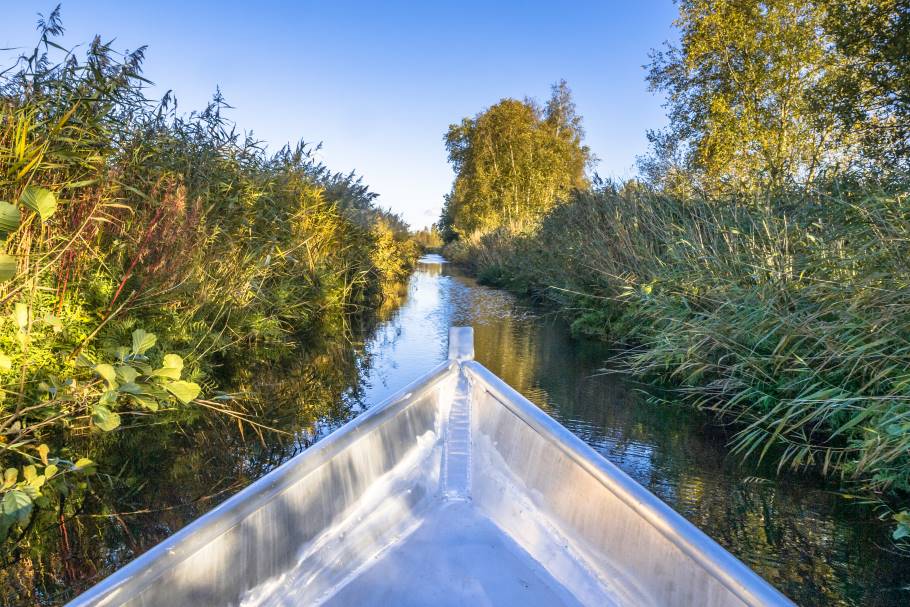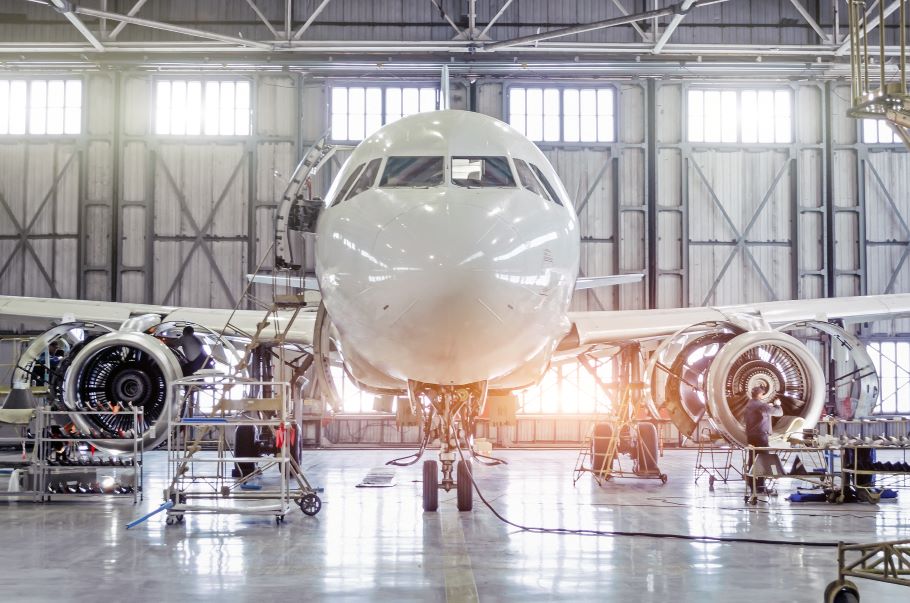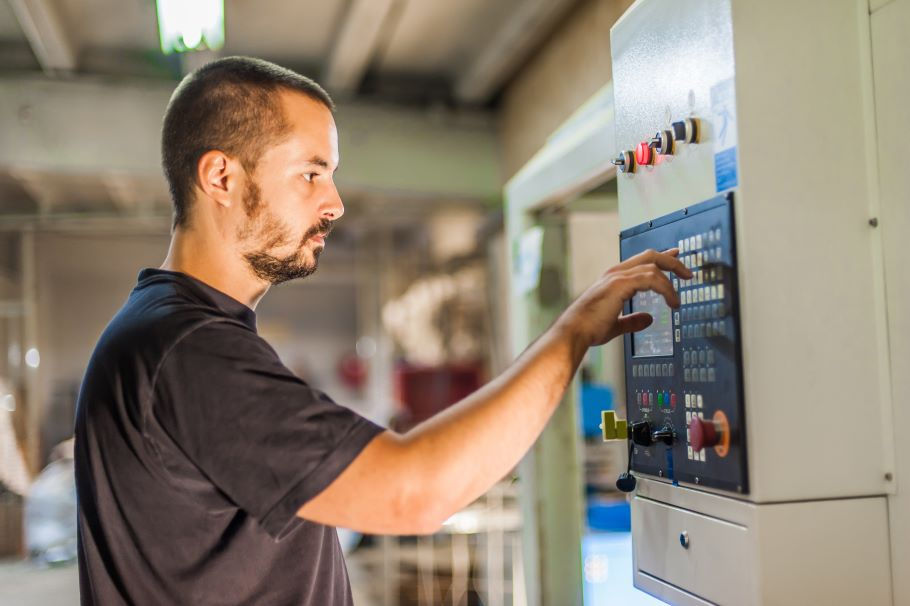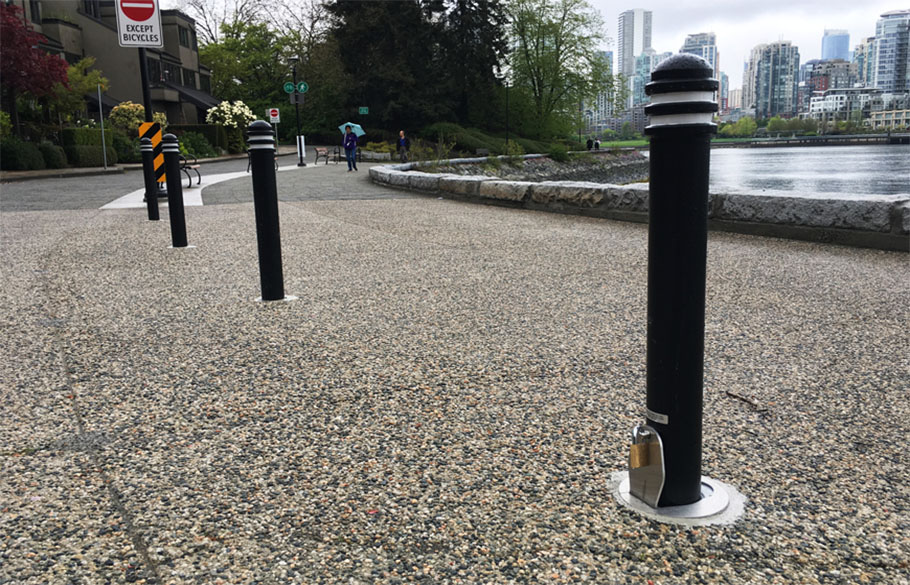The history and evolving design of a basic invention

In North America, February 14th is best known as Valentine’s Day. It also marks Ferris Wheel Day, celebrating the inventor’s birthday. George Ferris Jr created the eponymously named wheel for the 1893 Chicago World’s Columbian Exposition. It was a 250-foot-high structure outfitted with 36 cars, each capable of carrying 40 people, built to rival the Eiffel tower. It was an engineering marvel. Today, the Ferris wheel and wheels in general are mundane; the wheel with axle is one of engineering’s six classical simple machines. Yet the basic wheel was also a marvel, invented after metallurgy and the smelting of bronze. It appeared well after the domestication of animals and the establishment of agriculture. Unlike other simple machines, there are no wheel-and-axles in nature for early humans to copy. The idea of the wheel as a primitive technology is incorrect: they’re a human invention that didn’t appear until around 5,000 years ago. Their utility, so obvious to us now, developed slowly, and new uses are still evolving today.
In manufacturing, the Industrial Revolution oversaw the regular creation and use of the industrial wheel on metal tracks. Standardized, large-scale production and use of cast iron and steel wheels is less than 200 years old. Although it is commonplace, the wheel is still being adapted and improved.
What is a simple machine?
Simple machines provide a mechanical advantage that makes work easier. Work, in physics, is when a force acts upon an object, causing displacement. Simple machines use mechanical advantage, or leverage, to make work easier. This often means that simple machines will do use less force over a greater distance to do the same amount of work.
For example, lifting a bowling ball one foot into air requires a certain amount of work. The amount of work required is the same to lift it as it would be to push it up a ramp to the same height (assuming negligible friction). However, lifting the object takes more force than sliding it up a ramp. The more gradual the ramp’s slope is, the longer it must be to reach the height of one foot. The force required to slide the object up the ramp decreases as the slope decreases, even though force must be applied over a longer period.
The effectiveness of simple machines is measured by their ideal mechanical advantage, or IMA, in a frictionless system.
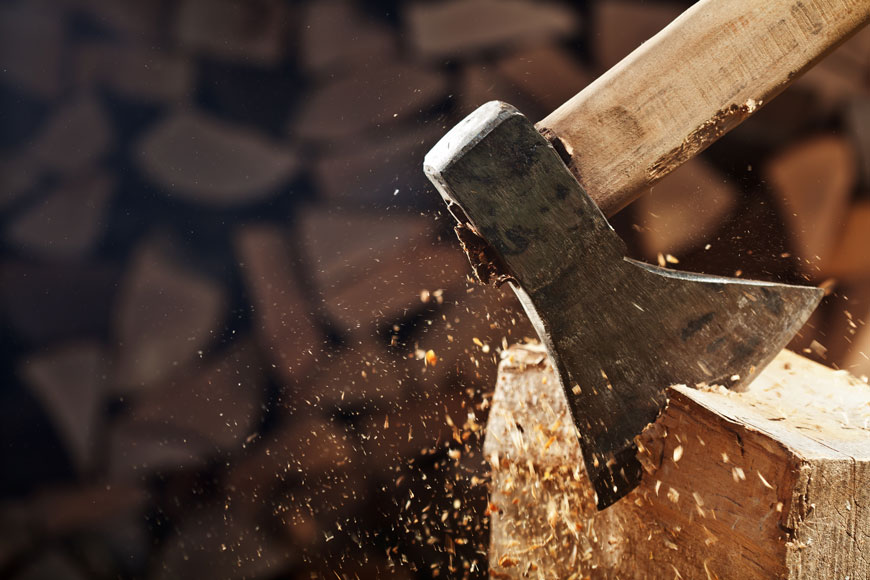
The six types of simple machines
There are six types of simple machines: the inclined plane, the wedge, the screw, the lever, the pulley, and the wheel and axle.
Simple Machine
Ideal (frictionless) Mechanical Advantage
Description
Inclined Plane

plane length / plane height
It is easier to climb up a gentle winding path than a steeper graded route, although it may take longer. The work is the same, but the force required is lessened. Inclined planes are so omnipresent they were not classified as simple machines by the ancient world.
Wedge

penetration depth / separation distance
An axe is the classic wedge, with two inclined planes back to back. The wedge’s force drives down into material and separates it. Wedges are one of the first primitive tools, found in stone hand axes, knife blades, and arrow heads.
Lever

input distance / output distance
A lever uses a beam and a pivot point to create mechanical advantage. Something close to the pivot is moved a smaller distance than something farther away as the beam moves across the pivot. The far point moves farther and therefore has greater acceleration. Force is mass times acceleration: greater acceleration increases force. Levers were first described as simple machines in the 3rd century BC.
Screw

2π diameter screw shaft / penetration depth
A screw is essentially a twisted inclined plane that can lift objects or bind them together. The screw’s mechanical advantage comes through the rotation of the inclined plane and can be amplified with the force of a lever.
Pulley

Total number of supporting rope loops
A pulley is a set of ropes and rounds that help do the work of lifting an object. Each length of rope takes a fraction of the object’s mass. The distance the rope must be pulled to lift the object increases, as the rope must travel through all the pulley points. The force that is needed decreases.
Wheel and Axle

wheel radius / axle radius
A wheel is a disc with a larger radius affixed to an axle with a smaller radius. When the wheel and axle spin together, points on the edge of the wheel move a greater distance than points on the edge of the axle. Force at the edge of the wheel is magnified to do the work of pulling load along the axle. Conversely, small rotations along the axle are amplified to cover more distance around the edge of the wheel.
The discovery of the wheel
Wedges, levers, and inclined planes were used in prehistory, but wheels and axles are not found in the archeological record until 3500 BCE, during the Bronze Age. Though wheels are associated with transportation in the modern era, that was not their first or most common use. Potters in Mesopotamia first used a hand-wheel as a rotating platform to coil clay pots and other vessels. In Mesoamerica, the first wheels were on small statuettes, placed at the end of their legs to roll like today’s toy cars. Yet wheeled vehicles were not found in the North American archeological record until after European contact. Winches, mills, and manufacturing uses for wheels exist in places where wheeled vehicles do not.
The first wheeled vehicles were push carts using simple wooden circles with a hole for the axle. The wheels themselves were heavy and the axles turned with them, creating friction in the system. For these reasons, wheels tend to show up where there were large domesticated animals. This may explain why Mesoamerican culture did not adopt the wheel: there were no animals to put at their yoke.
In the first wheels, axle and wheel rotate together. This system allows a winch, windmill, or waterwheel to work, but is less than ideal on a cart. A vehicle that has a rigid wheel and axle system is not easy to pull around corners, as going around a corner smoothly requires the outer wheel to travel further (and therefore faster) than the inner wheel. Many carts with a fixed wheel and axle also experience extra friction. Any points where the moving axle is in contact with the load will rub. Finally, fixed axles had to be both strong enough to bear a load but slender enough to fit into a wheel.
To produce a wheel that turned around a fixed axle, materials and tools had to advance. The precision of metal hand tools was necessary to carve a small axle to thread into a wheel. Wood was also the most plentiful, durable material around, yet it is often variable, swelling and shrinking with moisture and temperature. It needed to be dried and seasoned to make sure wheels were operational for a useful length of time. All in all, using wheels for transportation offered several complex issues for our ancestors to solve.
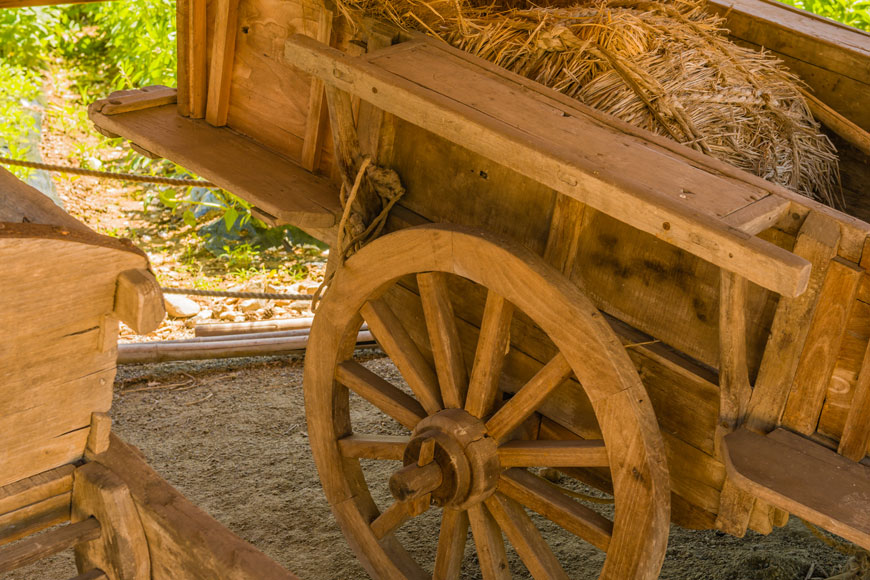
The invention of spokes
The invention of spoked wheels by the Sintashta culture in 2000 BCE allowed for the creation of efficient carts. Spoked wheels are lighter and make vehicles easier to pull. Wooden wheels compress slightly against the ground as they drive, providing some shock absorption while the radial spokes on the bottom of the wheel transfer the load.
It was the development of spokes that allowed the first war chariots to become effective. The Caucasus people developed a horse-and-chariot culture and in was in part due to this technological advance that their territory and range grew peaking in the 7th century BCE.
Compound wheels, bearings, and drive wheels
Early wheels and modern wheels seem similar, other than the materials changing—yet many small components have changed their functionality.
Compound wheels were a big innovation, adding metal to wooden wheels. The iron-wrapped wooden wheel was an improvement to prevent fast wear and to help protect a wheel from moisture. Almost all wheels are compounded in some way now, whether at the wheel rim or at its bore.
The surface between the axle and the wheel, known as the bearing, is an important point in the construction of the wheel that has seen invention and innovation during the long development of this technology. Lowering the friction at the bearing brings a wheel closer to its “ideal mechanical advantage.” Bushings and roller- or ball-bearings are the major ways we lower friction and make the wheel and axle more efficient today.
The invention of the motor vehicle saw widespread return to the very first wheel-and-axle model: the two are again fixed together. With drive wheels, an engine turns the axle and the axle turns the wheel. The return to fixed axles on vehicles is only useful with massive developments in powertrain, steering, and shock engineering.
Road infrastructure and wheels
Aside from internal engineering issues, wheel functioning is affected by road surfaces. Pack-animals transport goods in the absence of decent infrastructure, and can step through mud, sand, stone, or ice.
From 600 BC, there is evidence that people developed early rail-like systems to pull rolling carts along a guided route. This infrastructure development led to the invention of wheel flanges: lips on the edges of the wheels that keep them on a rail or track. These early track- or wagon-ways were often short and very limited, placed on routes that saw regular shipping, portage, or manufacturing. Pack animals were used in many other places, transporting goods over unbroken ground.
The Romans are famous for their creation of a larger road network. Yet after the fall of the Roman Empire, many of these routes fell into disrepair. For four hundred years after the 2nd century CE, the standard mode of transportation in the Middle East and Africa became the camel, even though there had been adoption of wheeled vehicles in the area prior to that point. The upkeep was not worth the advantage given local conditions.
The relationship between infrastructure and wheels is part of the story of the Industrial Revolution.
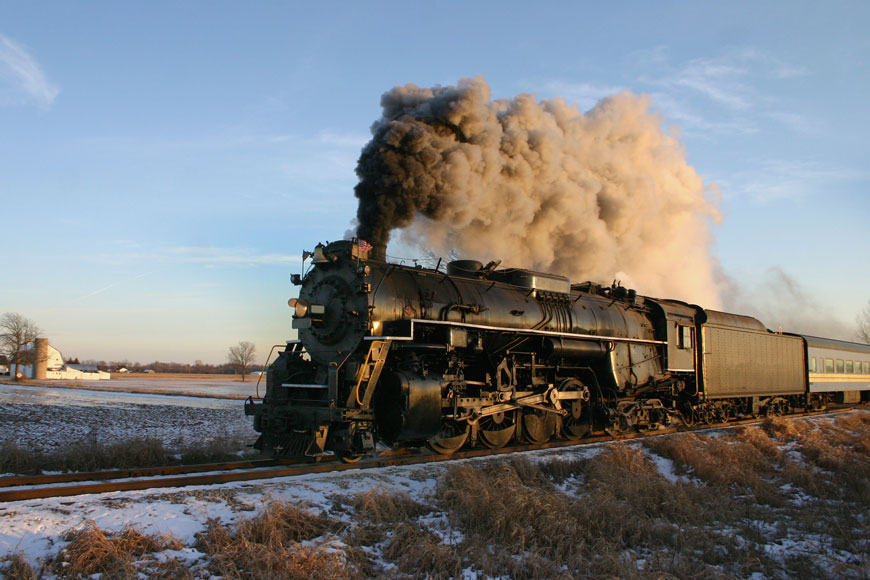
Wheels and the industrial revolution
The Industrial Revolution famously oversaw the development of railways, allowing heavy goods to be transported long ways by steam-driven trains. This development was dependent on several other engineering successes, particularly the consistent production of high-quality steel.
In the early 1700s, wooden trackways were commonplace for hauling goods in manufacturing and resource extraction applications like factories or logging. When cast iron was available, manufacturers would cover the edge of wooden tracks with iron, to reduce friction and make the system more efficient. Wooden wheels wore out more quickly on the iron, yet every load passing over the iron-clad rail moved more easily. Experiments with iron on both wheel and rail proved impractical, as iron is brittle: this arrangement made it more likely one or the other would chip and break. Further, very heavy loads slowly warped the track, and iron clad wheels added to the total weight.
The production of high-quality steel was a game changer for rails and wheels. As foundries and mills came on-line, the mass quantities of steel produced had another advantage: they were standardized. A single pattern in a foundry can make hundreds of nearly identical parts at a fraction of the time that it would take a wheelwright to produce a wooden wheel. In 1857 the first steel rails were laid in Derby, England. Soon, a network of steel rails, ready for the metal-wheels of the steam train, was spreading across the world.
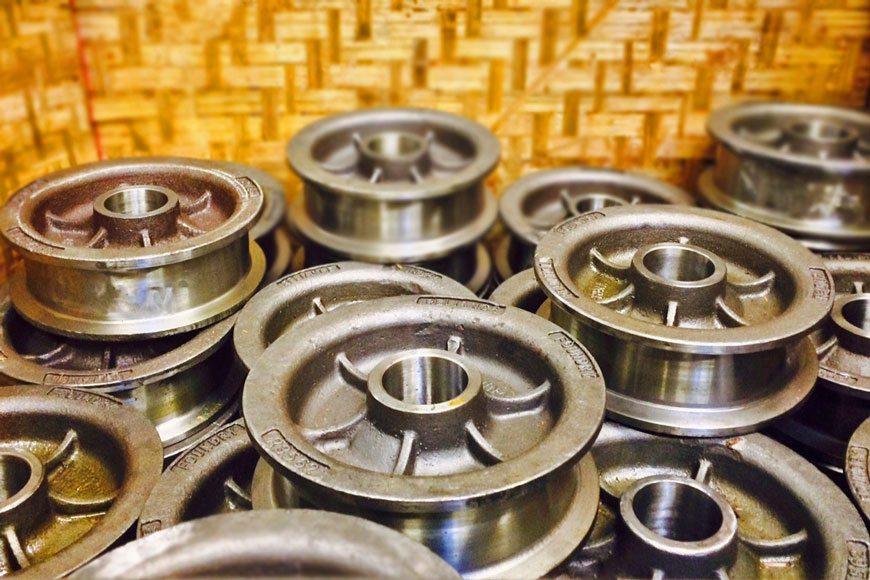
Cast iron and steel wheels
Metal wheels on metal tracks reduce friction between wheel and ground, so the mechanical advantage of the system increases. A cart with steel wheels and rails can transport a very heavy load without worry that the wheel will deform under the weight.
Cast iron wheels were at first the most used industrial wheel. They’re cheaper than steel and were once easier to cast. In some applications, cast iron is still in use today. Cast iron is resistant to fatigue, but it is brittle. Steel has greater impact resistance, meaning it is less likely to chip in the case of shifting loads, irregular tracks, or changing conditions. Sometimes cast iron’s brittleness is seen as an advantage: cast iron wheels will wear faster than a steel rail, and the wheels are easier to replace than rail. However, since flanges can break at any point, and irregular wheels can cause irregular wear on the track, many applications with shifting loads or conditions use steel for both, without any issues with the rails.
A complex simple machine
Wheels may have been around for only 5,000 years, but they have been integral to many complex industrial machines. Potters wheels, spinning wheels, winches, and gears all are based on the mechanical advantage provided by the ratio between the axle’s radius and the wheel’s radius.
After the Industrial Revolution, the development of standardized and mass production has made the wheel a major feature of our transportation systems. The rubber tire is useful for personal transportation over a complex network of roads. The low-friction and load-bearing rail and metal wheel systems are more mechanically efficient for repeated routes and large weights, and cast steel has allowed the development of inexpensive, strong, low-friction rail systems.
Whether changes to the internal structures of the wheel, the way energy is driven through them, the suspension or the steering, the basic concept of the wheel stays the same. It’s a simple machine, just like a lever, that allows a small effort over a greater distance do the same work as a larger effort over a smaller distance. Yet the complexities of this simple machine mean that it will no doubt continue to be central to human innovation.




